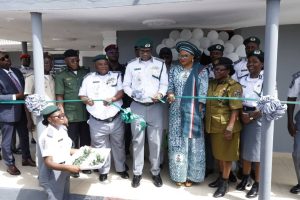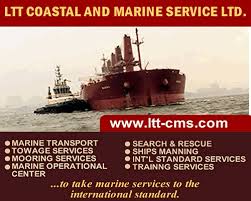…As Seaspan to Invest USD 200 Mn in Swiber***
The Port of Singapore, one of the leading global bunker ports, is gearing up for the IMO’s new sulphur regulations that will change the landscape for the bunker industry.
Namely, as of January 1, 2020, the shipping industry needs to switch to fuels containing 0.5 pct levels of sulphur, considerably down from the current 3.5 percent.
One of the major concerns for owners has been the availability of compliant fuels across global ports.
To prepare the industry for the global sulphur cap, the Maritime and Port Authority of Singapore (MPA) plans to publish an information sheet on the list of licensed bunker suppliers of low-sulphur fuels in Singapore by mid-2019.
The information sheet will be made available online.
As disclosed, several bunker suppliers and oil majors including Shell, ExxonMobil and BP have affirmed their readiness to supply 0.5 percent compliant fuels by January 1, 2020.
“This year marks the 20th edition of the Singapore International Bunkering Conference and Exhibition (SIBCON) and it remains the key global platform to provide thought leadership for the industry. In light of the International Maritime Organization’s global sulphur limit from 1 January 2020, Singapore is committed to ensure a sufficient and broad range of solutions available to ship owners,” Andrew Tan, Chief Executive, MPA said.
MPA also plans to set up a new work group with the industry to develop a roadmap that will include drivers such as digitalisation and innovation, and transparency and productivity in the sector. The work group will work towards completing the roadmap by fourth quarter of 2019.
LNG bunkering has been one of the key projects in the port’s preparations for the future of the bunker industry.
In 2014, MPA formed an international focus group to deepen cooperation and information sharing on LNG bunkering. Since then, the LNG bunkering port focus group has grown from three to 11 participants.
The Suez Canal Economic Zone Authority joined the group formally on Wednesday, October 3, becoming the first one from the Middle East. The expansion was formalized via an MoU signing during the Singapore International Bunkering Conference and Exhibition’s (SIBCON) opening ceremony.
“To kick-start the use of LNG as a marine fuel, MPA has co-funded the construction of eight LNG-fueled vessels. The first two were delivered this year to Keppel SMIT Towage and Maju Maritime, which have since conducted a total of 15 LNG bunkering operations. We expect this number to grow as more LNG-fueled vessels are delivered,” Singapore’s Minister of transport and Health, Lam Pin Min, said.
“Outside of Singapore, MPA continues to work closely with ten other like-minded ports through the LNG Bunkering Port Focus Group. I am glad to note that the focus group will be releasing a joint timeline today, showing the readiness of each port to provide LNG bunkering facilities.”
The focus group released an infographic jointly developed by the members:
Beyond the use of LNG as a marine fuel in the Port of Singapore, the MPA has allocated SGD 5 million to the Green Energy Programme (GEP) to support the development of other cleaner alternative marine fuels. Companies can tap on the fund to carry out various activities including the conduct of research and development for cleaner marine fuel solutions in Singapore.
Earlier this year, MPA announced the mandatory use of mass flow metering (MFM) system for delivery of distillates in the port as of July 2019, to boost transparency and productivity of the bunker industry.
MPA has commenced the acceptance tests to roll out MFM on bunker tankers for the delivery of distillates.
“The first test was completed in September 2018 and MPA is working closely with owners to schedule acceptance tests for all distillates bunker tankers. MPA is on track to implement the mandatory use of MFM on all bunker tankers delivering distillates by 1 July 2019,” the port authority said.
In the coming months, the port authority plans to pilot an electronic Bunker Delivery Notes (e-BDN) to drive greater productivity, efficiency and transparency in the bunkering process. e-BDNs allow important bunkering information to be transmitted almost instantaneously to both buyers and sellers. MPA will continue to work with the industry to roll out this initiative as early as 2020.
In the meantime, Hong Kong-based containership owner Seaspan Corporation has entered into a binding term sheet to invest up to USD 200 million in Swiber Holdings Limited, a publicly traded Singaporean owner of offshore vessels.
The investment will include USD 20 million in exchange for an 80% economic interest in the restructured Swiber Group, and USD 180 million targeting a USD 1 billion LNG-to-power project in Vietnam under development, in exchange for economic interests in the project.
Bing Chen, Seaspan’s President and Chief Executive Officer, expects the investment to “unlock substantial value.”
“Concurrently, we will continue to invest in and improve operations of our existing containership leasing business to provide best-in-class service to our customers. I would like to congratulate our Special Projects team, led by Matthew Tinari, on structuring and executing this opportunistic potential investment,” Bing added.
Seaspan intends to fund the investment with cash on hand.
Closing of the first tranche is expected to occur in the first part of 2019, but is dependent on several conditions including the emergence of Swiber from its judicial management process in Singapore, the approval of Swiber’s shareholders and creditors, Singapore regulatory approvals and other customary conditions.
The second tranche is conditional on several conditions as well.
World Maritime News


















